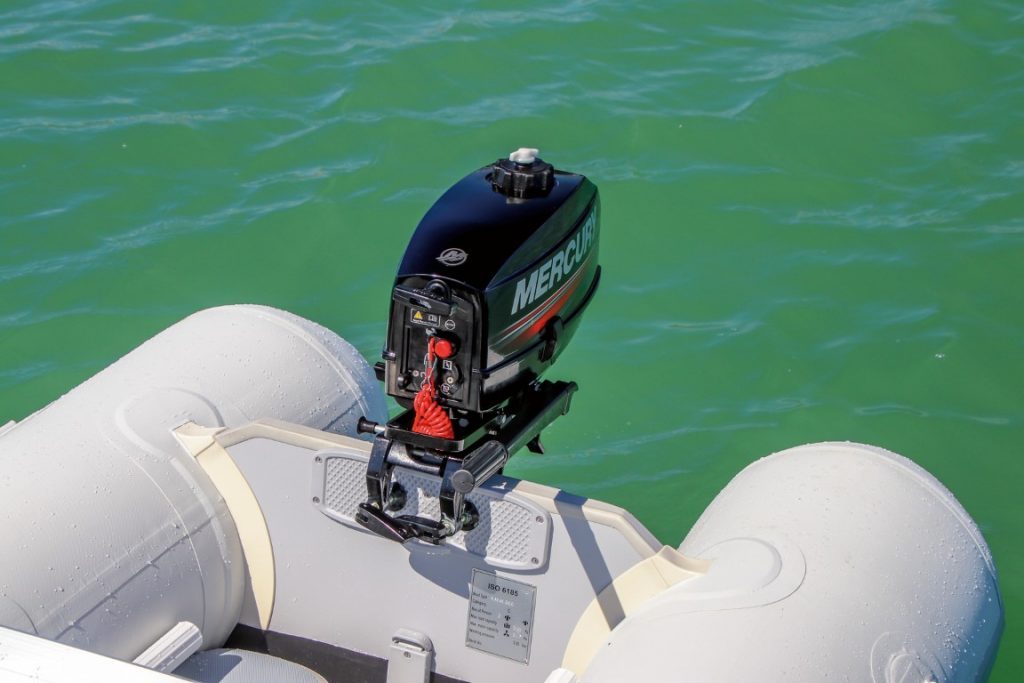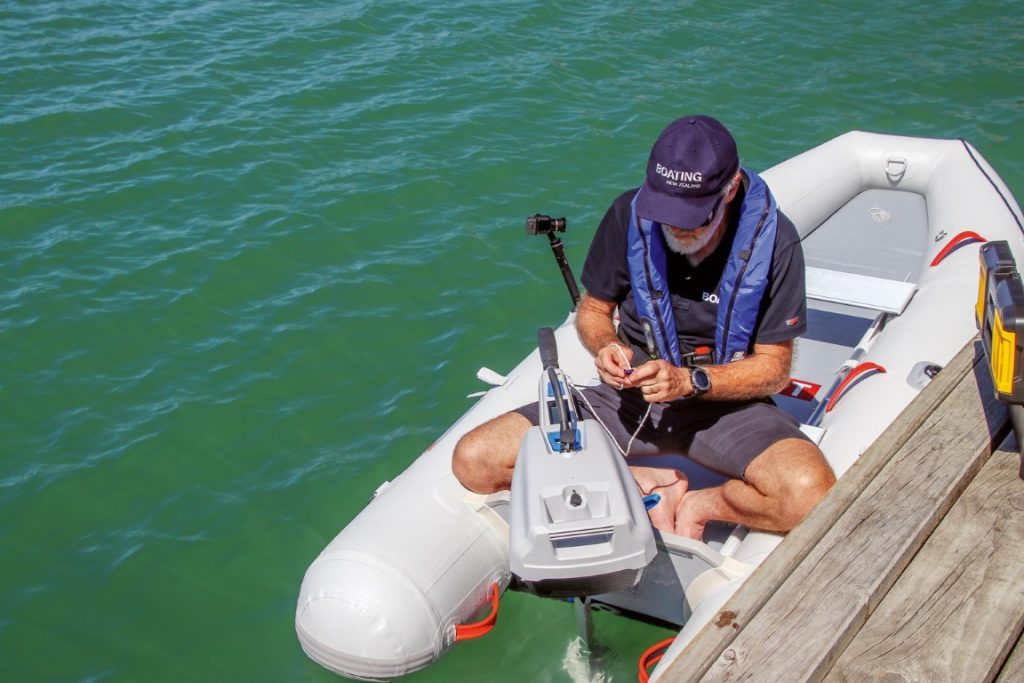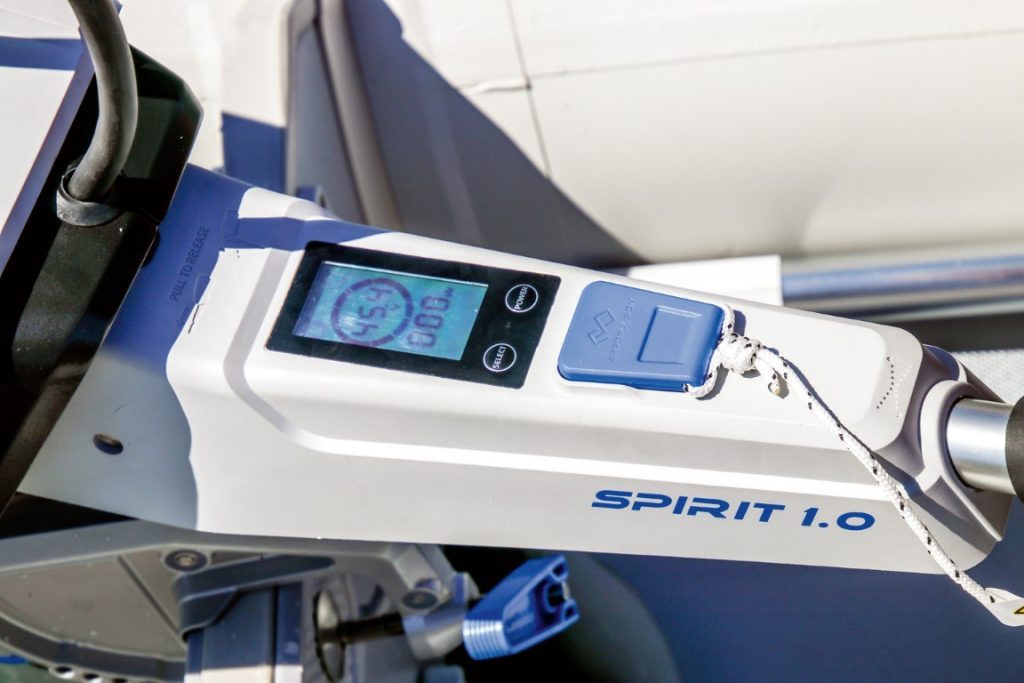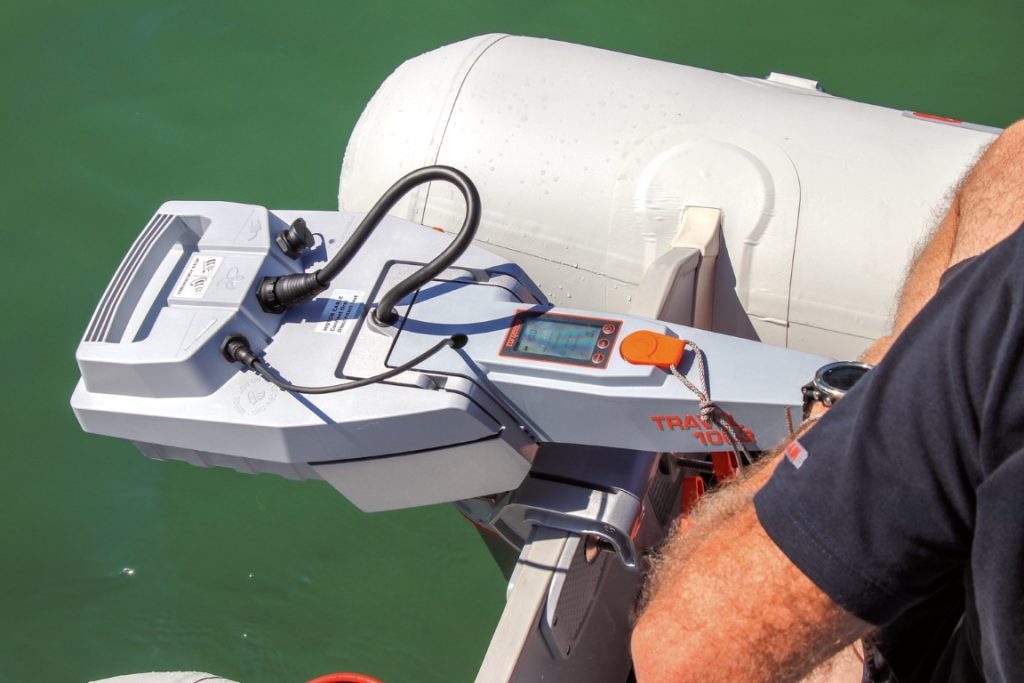

Just about every yacht/launch has a 2–5hp outboard on a tender to replace oars and muscle power. But petrol outboards have drawbacks – they are noisy, smelly and pollute the air and water. Time to think electric?
In the 21st century, battery power is where it’s at. Electric motors have become smaller, more powerful and more efficient. Batteries have increased in storage capacity and recharge more quickly, while related technology now enables us to build completely sealed units impervious to salt water.
One of the pioneers of the genre, German-made Torqeedo, continues to innovate and lead the market. Its expanded product range includes outboard-style models ranging from ultralight trolling motors right up to the equivalent of an 80hp outboard, as well as inboards and hybrid drives delivering up to 135hp (100kW) per shaft.
Torqeedo no longer has the market to itself, and a number of other players now have products readily available. Naturally the Chinese are big players in this area, having publicly stated they wish to be the global leader for renewable energy manufacturing. One of the most impressive new suppliers is ePropulsion, founded in 2002. It recently launched its latest range of electric outboards into its New Zealand dealer network.
The showdown
So we thought we’d pit three equivalent outboards against each other – to assess their strengths and weaknesses – and to see how the new electrics fared against a tried and tested two-stroke.
To establish a benchmark, we selected one of the industry workhorses, a two-stroke Mercury 3.3hp. Weighing in at 13kg (dry weight) this 75cc single cylinder has a wide-open throttle of 5,500rpm. The enclosed tank holds 1.4 litres of petrol/oil pre-mix, giving it a range of several kilometres. Thousands of these engines are in use around the world, and other manufacturers have almost identical models and configuration.

We fitted the outboard to a new True Kit Tactician inflatable boat, which at 3.0m in length but only 1.15m beam is longer and narrower than the typical inflatable. But that extra length provides 300kg of carrying capacity and more space, and with four sealed air chambers and two seats, it is safe and comfortable. Recommended engine size for this boat is 3.5 hp, so we were just about spot-on.
Fitting the Mercury was simple. Its 13kg was relatively easy to swing over and drop onto the transom. We tightened the clamps, clipped the kill cord around a wrist, opened the breather cap and fuel taps, set the choke and gave her a pull. These engines are legendary for their easy starting and she coughed into life pretty much on the first swing. After a few seconds we pushed the choke back in, the usual white two-stroke smoke cleared and we started our run.
To keep things fair, we set up a straight out-and-back course within the Westhaven Marina, and logged our speed in both directions. The Mercury 3.3hp managed an average of 7.9 knots over the 100m or so in either direction, with a single occupant in the boat. Fuel consumption was negligible over this short distance. Noise levels were reasonably high, as you would expect from a high-revving two-stroke motor running hard-out. A four-stroke would have been somewhat quieter.
We then swapped the Mercury for the ePropulsion Spirit 1.0 electric outboard. It comes in a handy carry bag which keeps everything tidy and prevents bits going astray. First the lower unit is clamped to the transom with the control arm already attached. Since the battery is not attached at this point the weight is just under 10kg and so it’s even easier to swing into place.

With the lower unit secure, the fully-sealed (and floating) battery pack clips securely in place. A single IP67 waterproof connector joins the battery to the controls, and you’re almost ready to go. The last step is to fit the magnetic kill switch, a great improvement on the often troublesome mechanical kill switches on some petrol outboards.
Controlling the outboard is childishly simple – twist the throttle one way and you go forward, twist it in the reverse direction and the motor goes into reverse. The lack of noise is disconcerting at first – a faint hum is the only sound, even at full speed. Pretty soon you appreciate being able to hear the motion of the boat in the water, as well as being able to converse with other water users, even with the throttle fully open.
The fully-sealed, smart LCD displays the remaining battery charge level, the amount of power the motor is delivering, and any error messages. Manufacturer specs claim the engine has a run time of an hour at full throttle, which increases to four hours at quarter throttle.
Although this motor is touted as the equivalent of a 3hp, we only managed 4.9 knots on our timed run. But the 280mm two-bladed propeller developed noticeably more thrust than the smaller, higher-revving three-bladed unit on the Mercury, so we definitely had greater acceleration.

The Spirit 1.0 comes with a 1kWh (1018Wh) lithium polymer battery with a nominal voltage of 40.7V, and of course additional batteries can be purchased and swapped out when more charge is needed. But a generous solar panel would keep a battery of this size fully-charged without difficulty, and a single unit would generally suffice. The complete Spirit 1.0 motor and battery, excluding carry bag, weighs 18.6kg.
Next it was the turn of the Torqeedo Travel 1003C. Very similar to the ePropulsion, its motor is rated at 1000 watts, which generates just under 500 watts in effective propulsion.

The Lithium-Ion battery of the Torqeedo had a total capacity of 915Wh with a nominal voltage of 29.6V, but the entire unit with battery was somewhat lighter at just 14.9kg. Once again, the battery is removable for installation and charging, and in the case of the Torqeedo the control handle also clips off so the entire unit folds into a more compact size for storage.
Handling is very similar to the other electric, and in fact we achieved exactly the same top speed of 4.9 knots. The electronics definitely help step up the game for the Torqeedo, with an on-board GPS that can calculate remaining range.
The Torqeedo also integrates with a smartphone app. A number of extras are available for the Torqeedo, including a dedicated solar panel to self-charge, various travel bag options, and three different battery sizes. Each of the Torqeedo batteries comes with an external USB adaptor, so you can use the same battery for charging devices like smartphones.
Pros & Cons?
Firstly, consider the upfront costs. The Mercury 3.3hp retails for $1,299, the ePropulsion Spirit 1.0 is $2,999 while the Torqeedo Travel 1003 CS as tested retails at $3,590. So the electric option’s more than twice the price of the petrol, and even with the current fuel price you’re unlikely to recoup that saving in fuel costs.
A second factor is that the higher-revving petrol motor achieved a higher top speed, although in terms of typical dinghy usage this is unlikely to be important.
But the electric motors appeal for other reasons. The lack of noise is fantastic, and when fishing, hunting or duck shooting, silence can be critical to success. For cruising yachties it is great to head out silently without waking up everyone within earshot. And then there is the lack of a ‘dirty’ two-stroke engine pumping burned oil out into our waterways.

But perhaps the main advantage, and the reason these units are flying off the suppliers’ shelves, is the convenience. Without having to keep a can of smelly petrol handy, and with batteries that can hold their charge for several years (or with a solar panel to top them up), you have can have the peace of mind knowing you always have a reliable, clean and silent power source available.




